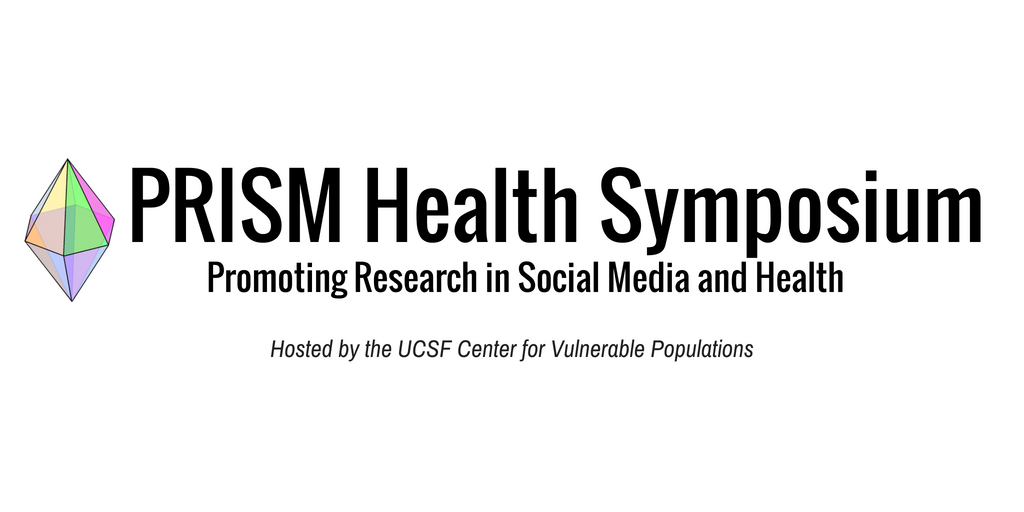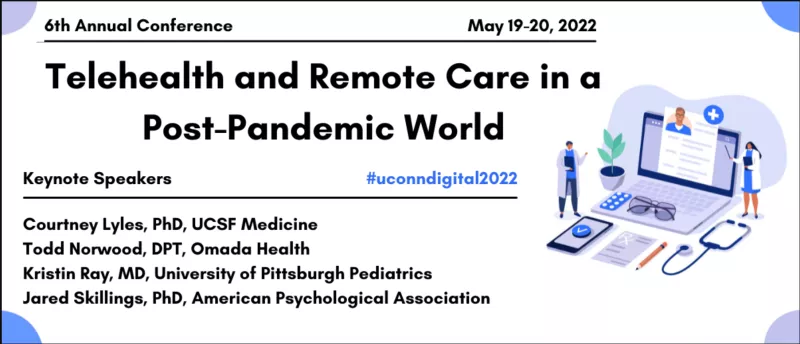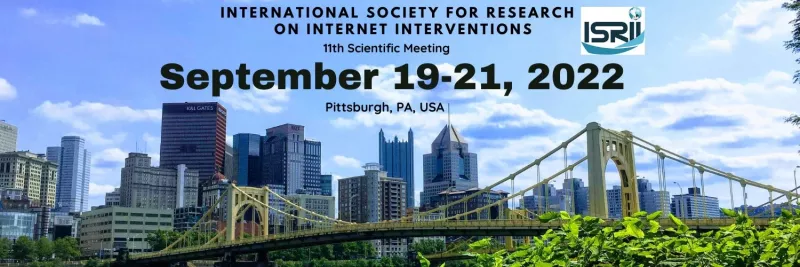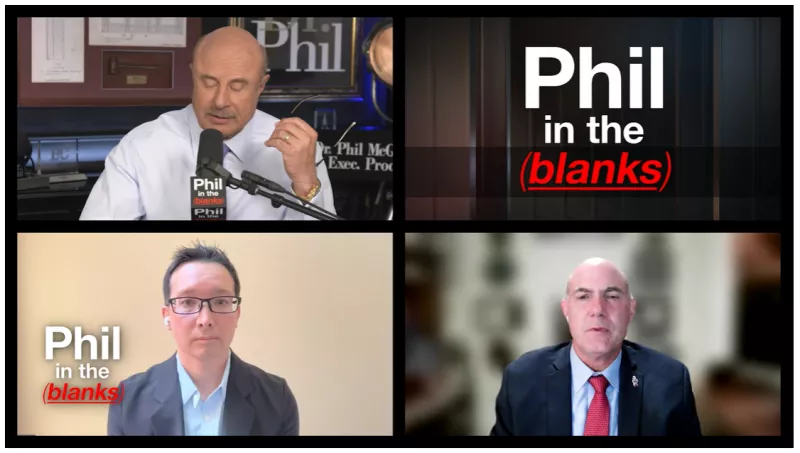Events
UConn Center for mHealth and Social Media, 6th Annual Conference
6th Annual Conference, May 19-20, 2022
Telehealth and Remote Care in a Post-Pandemic World
Registration open now until May 17, 2022 11:59 PM ET
International Society for Research on Internet Interventions (ISRII) 11th Scientific Meeting
Pittsburgh, PA | September 19-21, 2022
Storm Clouds and Silver Linings: How Digital Technologies Have Helped Us Weather the COVID Pandemic
Call for Papers: Deadline Friday, April 15th
Registration will open Monday, April 18th
Funding Opportunity
The purpose of this initiative is to support research that seeks to (1) understand the underlying mechanisms and (2) test interventions to address and mitigate the impact of health-related misinformation and disinformation on health disparities and the populations that experience health disparities. Outcomes of interest include physical and mental health, health decision-making, behavior change, adherence to evidence-based prevention and treatment guidelines/recommendations, and morbidity and mortality.
Call for Papers
JMIR Publications is delighted to announce a collaboration with the World Health Organization (WHO) in publishing a theme issue entitled “Chatbots and COVID-19". Deadline is April 30, 2022

Media
PRISM Steering Committee Member, Dr. Timothy Mackey, joined Dr. Phil and Derek Maltz on the Phil in the Blanks podcast to discuss the sales of fentanyl and other drugs on social media, and how his work with S-3 Research detects and remove illicit drug dealers online.
Recent Social Media and Health Publications
Iles IA, Gaysynsky A, Chou WS. Effects of narrative messages on key COVID-19 protective responses: Findings from a randomized online experiment [published online ahead of print, 2022 Jan 27]. Am J Health Promot. 2022;8901171221075612. doi:10.1177/08901171221075612
Co-authored by PRISM Steering Committee member, Dr. Sylvia Chou, this study investigated the effectiveness of narrative versus non-narrative messages in changing COVID-19-related perceptions and intentions. Compared to non-narratives, narratives led to 1) less positive perceptions about the benefits of unproven treatments; and 2) less willingness to receive an unproven drug. This effect was stronger among individuals with higher baseline willingness to receive unproven drugs. Narratives also led to more positive perceptions of vaccine safety/effectiveness, but only among individuals with lower baseline vaccine perceptions.
Majmundar A, Chu M, Perez C, Hoang Y, Yuan J, Unger JB, Allem J. Tobacco and cannabis use advertisements targeting adolescents and young adults on Snapchat in 2019. Prev Med Rep. 2022;26(101758). DOI:10.1016/j.pmedr.2022.101758.
Co-authored by PRISM Steering Committee member, Dr. Jon-Patrick Allem, this study described tobacco and cannabis-related ads targeted towards adolescents and young adults on Snapchat. Health Consequences was the predominant theme followed by Quitting among tobacco-related ads. Government organizations sponsored most tobacco-related ads. Tobacco-related ads targeting adolescents received mean = 4,122,071 impressions and cost mean = $10,385.6 per ad. Tobacco-related ads targeting young adults received mean = 2,151,217 impressions and cost mean = $5,382.1 per ad. Health Consequences was a predominant theme among cannabis-related ads followed by Policy Advocacy. Advocacy organizations sponsored most cannabis-related ads targeting young adults. Cannabis-related ads targeting adolescents received mean = 415,293.8 impressions and cost mean=$793.92 per ad. Cannabis-related ads targeting young adults received mean = 293,267.7 impressions, and cost mean = $740.58.
Calac AJ, Haupt MR, Li Z, Mackey TK. Spread of COVID-19 Vaccine Misinformation in the Ninth Inning: Retrospective Observational Infodemic Study. JMIR Infodemiology 2022;2(1):e33587. doi: 10.2196/33587. PMID: 35320982
Baseball legend, Hank Aaron, passed away from natural causes, just 2 weeks after he received the COVID-19 vaccine. Antivaccination groups attempted to link his death to the Moderna vaccine. In this study co-authored by PRISM Steering Committee member, Dr. Tim Mackey, the spread of misinformation linked to erroneous claims about Hank Aaron’s death on Twitter was assessed. Misinformation was the most prominent content type (56%) detected, followed by public reaction (28%) and media reporting (16%). Most of the comments on misinformation-labeled tweets expressed positive sentiment (78.6%) to misinformation and did not refute it. Common misinformation themes observed included linking the death of Hank Aaron to “suspicious” elderly deaths following vaccination, claims about vaccines being used for depopulation, death panels, federal officials targeting Black Americans, and misinterpretation of VAERS reports.
Deiner MS, Seitzman GD, Kaur G, McLeod SD, Chodosh J, Lietman TM, Porco TC. Sustained Reductions in Online Search Interest for Communicable Eye and Other Conditions During the COVID-19 Pandemic: Infodemiology Study. JMIR Infodemiology 2022;2(1):e31732. doi: 10.2196/31732. PMID: 35320981.
Co-authored by PRISM Steering Committee member, Dr. Michael Deiner, this study aimed to determine if reduction in Google searches in the United States for terms related to conjunctivitis and other common communicable diseases occurred in the spring-winter season of the COVID-19 pandemic, and to compare this outcome to searches for terms representing noncommunicable conditions, COVID-19, and to seasonality. Terms representing conjunctivitis and other communicable conditions showed a sustained reduced search trend in the first 4 seasons of the 2020-2021 COVID-19 pandemic compared to prior years. In comparison, the search for noncommunicable condition terms was significantly less reduced. A significant correlation was found between reduced search for a term in 2020-2021 and seasonality of that term. Searches for COVID-19–related conditions were significantly elevated compared to those in prior years, and searches for influenza-related terms were significantly lower than those for prior years in winter 2020-2021.
Purushothaman V, McMann TJ, Li Z, Cuomo RE, Mackey TK. Content and trend analysis of user-generated nicotine sickness tweets: A retrospective infoveillance study. Tobacco Induced Diseases. 2022;20(March):30. doi:10.18332/tid/145941.
Co-authored by Dr. Tim Mackey, this study aimed to examine trends and characteristics of nicotine sickness content on Twitter from 2018-2020. Of the collected tweets containing nicotine sickness-related keywords, 18.3% tweets reported one or more suspected nicotine sickness symptoms of varied severity. The volume of tweets reporting suspected nicotine sickness appeared to increase throughout the study period, except February-April 2020. Stationarity in the volume of ‘nicsick’ tweets between 2018–2020 was not statistically significant indicating a change in the volume of tweets.
Haupt MR, Weiss SM, Chiu M, Cuomo R, Chein JM, Mackey TK. Psychological and situational profiles of social distance compliance during COVID-19. J Commun Healthc. 2022;15(1):44-53, DOI: 10.1080/17538068.2022.2026055
Health advice in the wake of the COVID-19 pandemic has called upon the public to re-evaluate risk associated with recently routine behavior. However, differences in demographics, situational circumstances, and psychological dispositions create inequities in how people are able to respond to risks presented by the virus. In this study co-authored by Dr. Tim Mackey, a data-driven ‘personas’ approach was employed to characterize individual differences in reactions to social distance guidelines due to the COVID-19 pandemic. This profile approach unpacked important variability in the evaluation of risk for COVID-19 contagion, as well as adherence to public health guidance. Profiles engaged in high-risk behaviors were more likely required to work on-site and report higher financial impact related to the pandemic. These results suggest risk-taking behaviors within the context of COVID-19 may be driven by factors related to economic inequity since those more likely to be essential workers do not have the ability to remain as compliant to social distancing compared to those with higher economic status.
Vanderpool RC, Gaysynsky A, Chou WS, Tonorezos ES. Using Behavioral Science to Address COVID-19 Vaccine Hesitancy Among Cancer Survivors: Communication Strategies and Research Opportunities [published online ahead of print, 2022 Mar 19]. J Behav Med. 2022;1-11. doi:10.1007/s10865-022-00304-7.
Due to cancer survivors' increased vulnerability to complications from COVID-19, addressing vaccine hesitancy and improving vaccine uptake among this population is a public health priority. However, several factors may complicate efforts to increase vaccine confidence in this population, including the underrepresentation of cancer patients in COVID-19 vaccine trials and distinct recommendations for vaccine administration and timing for certain subgroups of survivors. Co-authored by Dr. Sylvia Chou, this commentary elucidates factors that may contribute to COVID-19 vaccine hesitancy and vaccination uptake among cancer survivors. This piece also highlight promising communication strategies for addressing COVID-19 vaccine hesitancy among survivors and outline behavioral research priorities for ensuring optimal protection of this at-risk population.



